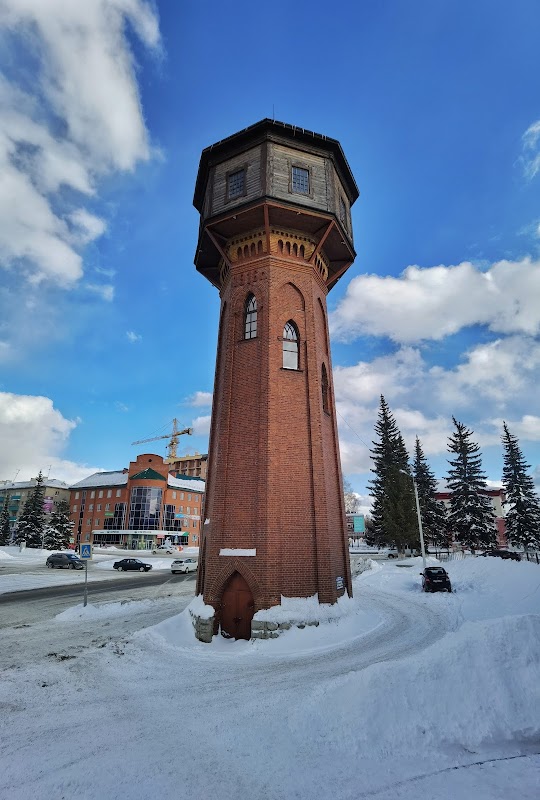Winter Skiing Across the Endless White: Exploring the Ural Mountains Near Severouralsk
The Ural Mountains near Severouralsk offer expansive winter skiing routes through vast snowy forests and plateaus. This winter adventure blends challenging terrain with accessible routes, perfect for those ready to engage with harsh but stunning wilderness.
Dress in Layered Clothing
Wear moisture-wicking base layers, insulated mid-layers, and a waterproof outer shell to stay warm and dry in fluctuating mountain temperatures.
Start Early to Maximize Daylight
Winter days are short; beginning your ski early helps avoid afternoon storms and tricky navigation in poor light.
Use Ski Crampons or Poles with Sharp Picks
Some uphill sections and icy patches demand extra grip to safely ascend and descend without slipping.
Keep Hydrated and Protect Your Water
Cold weather masks dehydration; use insulated bottles or hydration packs designed to prevent freezing.
Winter Skiing Across the Endless White: Exploring the Ural Mountains Near Severouralsk
Stretching along the boundary where Europe meets Asia, the Ural Mountains around Severouralsk in Sverdlovsk Oblast offer winter skiing that tests your endurance and rewards with vast, unbroken snowfields. Here, the landscape is fiercely itself: dense conifer forests stand silent under heavy snow, and icy winds whistle past ridges that challenge you to keep moving forward.
Skiers will find a mixture of terrain—wide plateaus blanketed in fresh powder, gentle slopes carved out by frozen rivers darting like veins through the mountains, and occasional steep climbs that demand steady technique and strong legs. The area spans tens of kilometers, but many routes can be tailored from 10 to 25 kilometers, depending on your skill and stamina. Elevation changes are moderate, typically rising around 300–500 meters over extended stretches, but the real challenge comes from the cold and the consistent snow cover that demands reliable gear and careful planning.
The forest acts like a quiet guardian, with low-hanging branches dipped under the weight of snow daring you to weave between them. The frozen rivers dare you to cross them with respect for their swift under-ice currents, hidden and dangerous if unaware. Weather can shift suddenly; clear, still mornings give way to gusting flurries that paint the landscape white again. Timing your day to start early ensures you maximize daylight and avoid the harsher winds that arrive later.
Practical preparation starts long before setting foot on skis: layers that breathe yet insulate, waterproof boots that grip both snow and ice, and hydration systems that don’t freeze. Emergency beacons and a solid weather forecast are musts in this remote terrain. Staying in Severouralsk provides essential access to local guides, rental gear, and emergency services.
Skiers of all levels can appreciate the sheer scale and solitude of these frozen stretches, but the mountains respect no one lightly. Moving across this landscape is an exercise in patience and focus, pushing through snow that holds you back while showing rugged beauty. This is winter skiing stripped to essentials—raw, exhilarating, and above all, real.
Nearby Trips
All Adventures
Boat Charters
Water Activities
Adventures near Severouralsk
Discover the unique and memorable adventures that make Severouralsk special.
Frequently Asked Questions
What level of skiing skill is required for the Ural Mountains around Severouralsk?
Routes vary from moderate to challenging, requiring proficiency in classic cross-country or touring ski techniques, as well as confidence navigating icy or uneven snow conditions.
When is the safest time to ski there in winter?
December through February typically provides stable snow cover. Mornings are safest due to firmer snow and calmer winds; avoid skiing late afternoons when weather can deteriorate.
Are there local guides or rental services available?
Yes, Severouralsk offers several outfitting shops for ski rentals and experienced local guides who understand the terrain and weather patterns intimately.
What wildlife might I encounter on the trails?
Though elusive, sightings of Siberian roe deer, snow hares, and occasionally Eurasian lynx are possible. Birds like the black woodpecker add to the winter soundscape.
Are there any avalanche risks?
Avalanche risks exist mainly near steep slopes and require attention especially during thaw cycles in late winter or spring. Carrying avalanche safety gear and consulting local forecasts is advised.
What are the emergency protocols if caught in a storm?
Seek shelter in dense forest areas away from ridge lines, use an emergency beacon if available, and stay put until conditions improve. Inform a local contact before your trip with your planned route.
Recommended Gear
Insulated Ski Boots
Key for warmth and support on cold, uneven snow; must be waterproof and compatible with your bindings.
Windproof and Waterproof Outerwear
Protects against biting winds and wet snow, preventing heat loss and discomfort during extended exposure.
Avalanche Safety Kit
Includes beacon, probe, and shovel if traveling through steep terrain known for avalanche risk.
Insulated Hydration Pack or Thermos
Prevents water freezing and allows consistent hydration on cold days.
Local Insights
Hidden Gems
- "The frozen stretch of the Kosvinsky Kamen plateau offers uninterrupted views with minimal foot traffic."
- "Hidden ice caves discovered along tributary valleys beyond the main ski trails."
Wildlife
- "Look for signs of ermine during early mornings and red squirrels darting under snow-laden branches."
History
"This region once marked traditional travel corridors for Ural indigenous tribes, with Severouralsk evolving as a mining hub whose winters test all who pass through."
